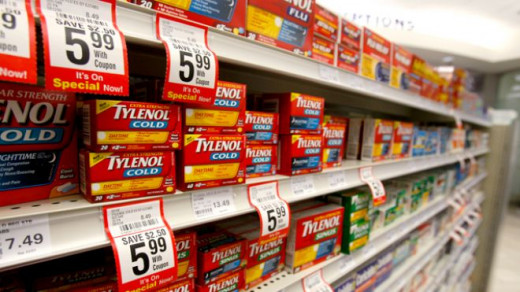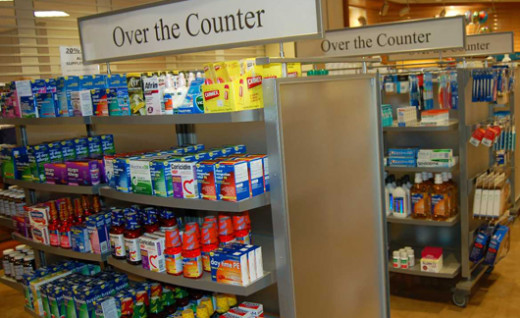- HubPages»
- Health»
- Health Care, Drugs & Insurance»
- Prescription & Over-the-Counter Drugs
The Health Significance Of The Rational Use Of Drugs And Medical Substances In General
A Drug Store

Drugs And Medicines
A drug substance is the active ingredient or component that produces pharmacologic activity. A drug product is the finished dosage form ( for example, tablet, capsule) that contains the active drug substances, generally in association with non-drug (usually inactive) ingredients that make up the vehicle or formation matrix. A medicine may contain one or more active constitutents (drugs) together with additives to facilitate administration (colouring, falvouring and other excipients). Pharmacological agents are used in therapeutics to:
- Cure diseases
- Alleviate symptoms
- Replace deficiencies
- Bioavailability is the fraction of an administered dose that reaches the systemic circulation. It is a measure of the rate and extent of absorption.
- Maintenance dose is the amount of drug that must be regularly administered to maintain a steady state concentration.
- Dosing interval is the amount of time between consecutive doses of a regularly administered drugs. This is usually a multiple of 24 hours or a number that is easily divided into 24 hours.
- Absorption is the transport of drugs molecules across cell membranes from the site of administration into the blood stream
- Drug metabolism (or biotransformation) refers to the biochemical changes that drugs undergo in the body leading to the formation of different metabolites with different effects.
Over The Counter Drugs

Classification of Drugs
Specific names: All drugs in general use rely on three terms: the generic, brand and chemical names. The generic name is the official medical name for the basic active substances. The brand name is chosen by the manufacturer usually on the basis that is can easily be pronounced, recognized or remembered. There may be several brands 9each by a different manufacturer) containing the same generic substance. Differences between the brands may be slight but may relate to absorption rate, (bioavailabilty), convenience and digestibility. The chemical name is a technical description of the drug.
General terms: Drugs may be grouped according to chemical similarity or classified according to use (antihypertensive) or biological effect (diuretic).
Legal Classification: This specifies which drugs can be sold over the counter and which require a doctor’s prescription. Government regulations, determined the degree of availability of many substances that have an abuse potential.
The Effect Of Drugs
Before a doctor selects a drug to be used in the treatment of a patient, they carefully weigh the benefits and the risks. These are defined under some terminologies.
Reaction time: Some drugs can produce rapid and spectacular relief while some take much longer to produce a response
Adverse effect: The adverse effects of a drug (also known as side effects or adverse reaction) are its underused effects, that is unintended by the doctor.
Benefit Vs Adverse Effects: In evaluating the risk/benefit ratio of a prescribed drug, the doctor has to weigh the drug’s therapeutic benefit to the sick person against the possible side effects.
Dose and response: The aim of drug treatment is to achieve a concentration of drug in the blood or tissue that lie somewhere between the minimum effective level and the maximum safe concentration. Not everyone responds in the same way to a drug and in many cases, the dose has to be adjusted.
© 2014 Funom Theophilus Makama









